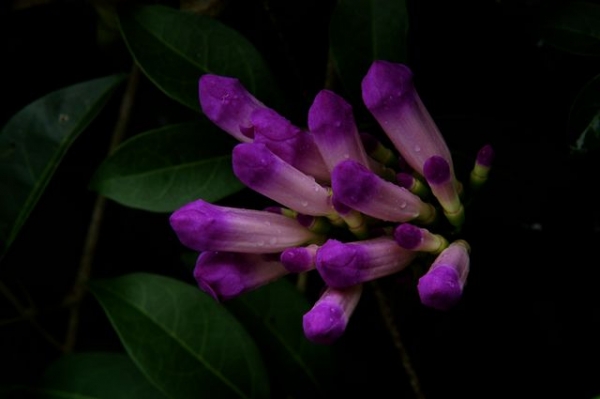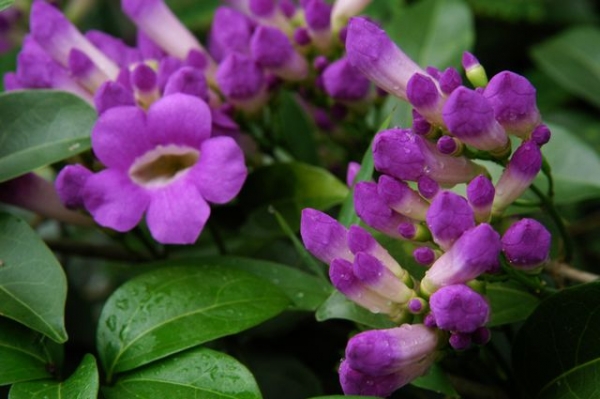Pseudocalymma alliaceum (Garlicvine)


Description
Family Bignoniaceae
Trees , shrubs , or vines , climbers rarely herbs. Leaves opposite, alternate, or whorled , simple or pinnately compound , rarely palmately compound , without stipules, climbers usually with tendrils modified sometimes into hooks or suckers . Inflorescences cymose , paniculate , or racemose, terminal or axillary , rarely flowers borne on old stems; bracts and bractlets present, sometimes deciduous. Flowers bisexual , zygomorphic, usually large. Calyx campanulate or tubular , truncate , 2-5-dentate, or glandular subulate-dentate. Corolla campanulate or funnelform , usually bilabiate; lobes 5, imbricate or valvate . Fertile stamens 4 (didynamous ) and staminode 1, or 2 and staminodes 3, rarely all 5 stamens fertile. Disc fleshy . Ovary superior, 2-locular, rarely 1- or 4-locular; placentation axile or parietal ; ovules numerous . Style filiform ; stigma 2-lobed. Capsule dehiscing loculicidally or septicidally, rarely fruit fleshy and indehiscent. Seeds numerous, usually winged or with tufts of hairs at both ends; endosperm absent.
About 116-120 genera and 650-750 species: mostly in tropical and subtropical regions; 12 genera and 35 species (21 endemic) in China.
Plants of the Bignoniaceae usually produce large flowers, and many species are widely cultivated in China as ornamentals . These include Arrabidaea magnifica Sprague ex Steenis, Campsis radicans (Linnaeus) Seemann, Catalpa speciosa (Warder ex Barney) Engelmann, Clytostoma callistegioides (Chamisso) Bureau & Schumann, Crescentia alata Kunth, C. cujete Linnaeus, Jacaranda cuspidifolia Martius, J. mimosifolia D. Don, Kigelia africana (Lamarck) Bentham, Macfadyena unguis-cati (Linnaeus) A. H. Gentry, Pandorea jasminoides (Linnaeus) Schumann, Parmetiera cerifera Seemann, Podranea ricasoliana (Tanfani) Sprague, Pyrostegia venusta (Ker-Gawler) Miers, Spathodea campanulata Beauvois, Stenolobium stans (Linnaeus) Seemann, Tabebuia chrysantha (Jacquin) G. Nicholson, T. rosea (Bertoloni) de Candolle, and Tecomaria capensis (Thunberg) Spach.
Habitat Typically found at an altitude of 0 to 1,448 meters (0 to 4,751 feet).
Source: Flora of China


